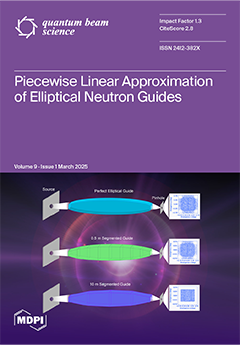In this study, L-threonine crystals (L-thr) containing Dy
3+ ions (L-thrDy5 and L-thrDy10) with varying mass concentrations (5% and 10%) were successfully synthesized using a solvent slow evaporation method. The structural properties were characterized by Powder X-ray diffraction and Rietveld refinement. The data
[...] Read more.
In this study, L-threonine crystals (L-thr) containing Dy
3+ ions (L-thrDy5 and L-thrDy10) with varying mass concentrations (5% and 10%) were successfully synthesized using a solvent slow evaporation method. The structural properties were characterized by Powder X-ray diffraction and Rietveld refinement. The data revealed that all three samples crystallized in orthorhombic symmetry (
P2
12
12
1-space group) and presented four molecules per unit cell (
Z = 4). However, the addition of Dy
3+ ions induced a dilation effect in the lattice parameters and cell volume of the organic structure. Additionally, the average crystallite size, lattice microstrain, percentage of void centers, and Hirshfeld surface were calculated for the crystals. Thermogravimetric and differential thermal analysis experiments showed that L-thr containing Dy
3+ ions are thermally stable up to 214 °C. Fourier transform infrared and Raman spectroscopy results indicated that the Dy
3+ ions interact indirectly with the L-thr molecule via hydrogen bonds, slightly affecting the crystalline structure of the amino acid. Optical analysis in the ultraviolet–visible region displayed eight absorption bands associated with the electronic transitions characteristic of Dy
3+ ions in samples containing lanthanides. Furthermore, L-thrDy5 and L-thrDy10 crystals, when optically excited at 385 nm, exhibited three photoluminescence bands centered around approximately 554, 575, and 652 nm, corresponding to the
4F
7/2 →
6H
11/2,
4F
9/2 →
6H
13/2, and
4F
9/2 →
6H
11/2 de-excitations. Therefore, this study demonstrated that L-thr crystals containing Dy
3+ ions are promising candidates for the development of optical materials due to their favorable physical and chemical properties. Additionally, it is noteworthy that the synthesis of these systems is cost-effective, and the synthesis method used is efficient.
Full article





